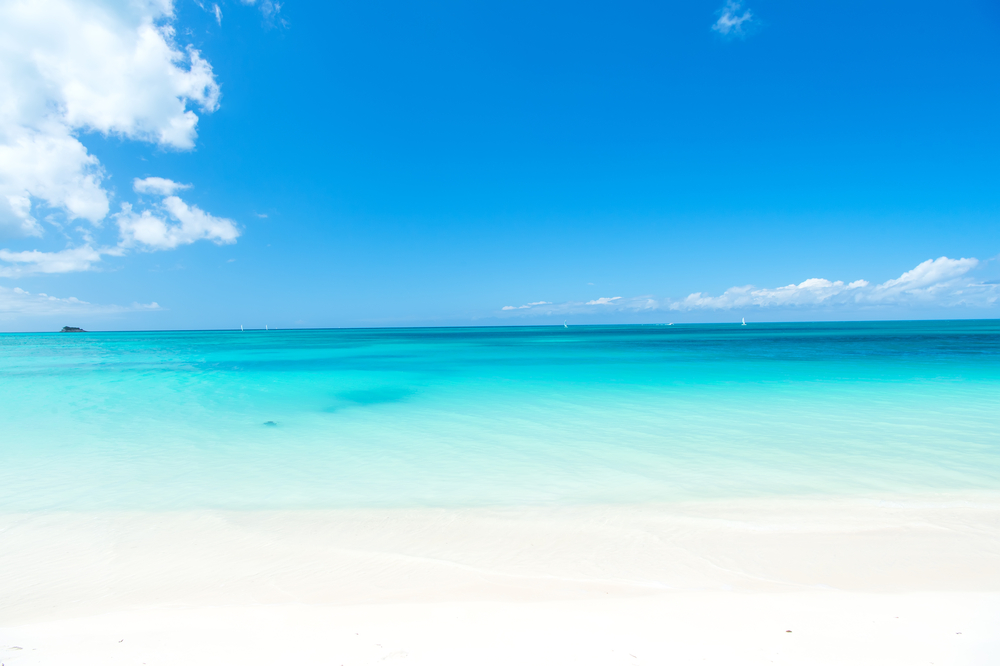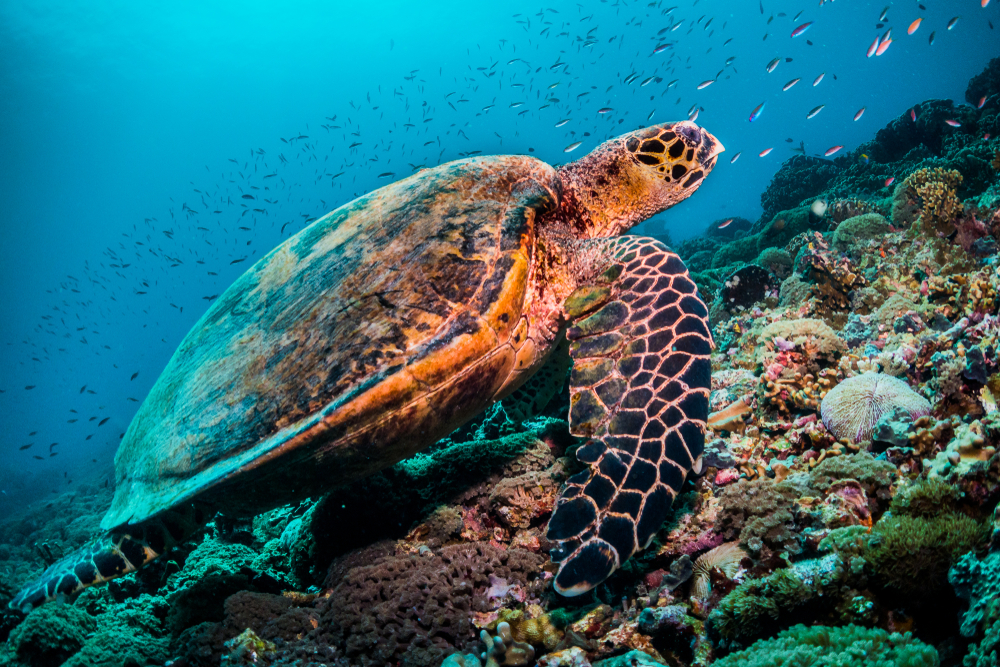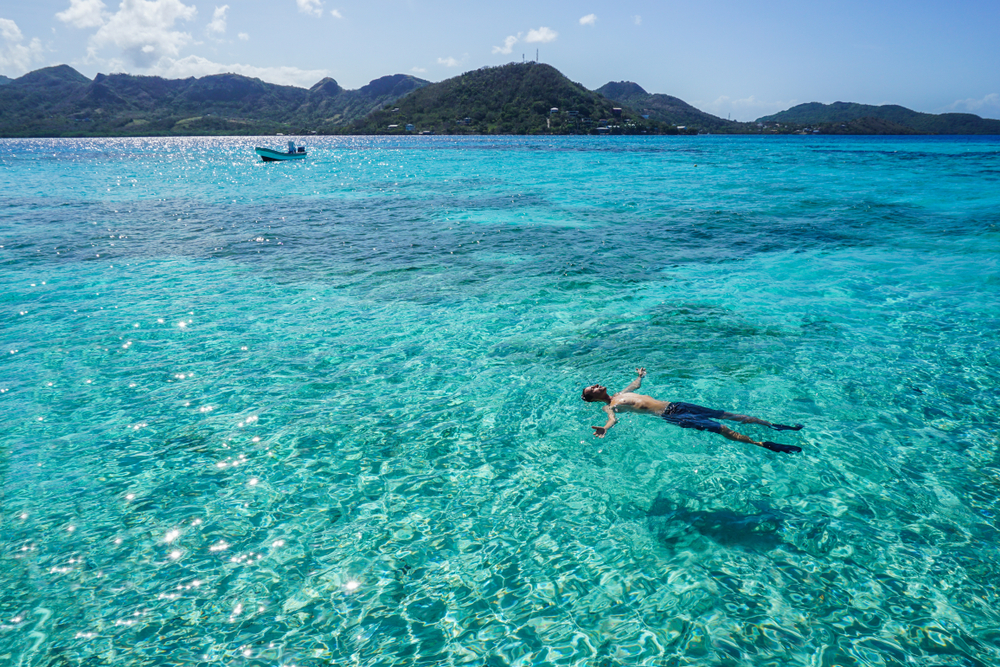Why is the Caribbean Sea Turquoise?
When flying into the Cancun airport, one can’t help but be drawn into the beautiful shades of turquoise, baby blue, navy blue, and white which dominate the Caribbean Sea. One of the most beautiful and highly admired bodies of water in the world is the Caribbean Sea. The historic legends of pirates, buried treasures, and romantic scenery create a plethora of dream-worthy moments. What’s not to like? Lying on a white sugar-fine beach, staring out at turquoise waves gently breaking onto the shoreline is pure paradise.

The question is often asked, “Why is the Caribbean Sea turquoise?” We think that’s a great question. Let’s start out by briefly discussing some basic information. The Caribbean Sea is America’s ‘Mediterranean Sea’. It spreads along the Greater Antilles starting with the island of Cuba, and then follows along Central and South America to the Lesser Antilles. It includes various Caribbean islands, as well as Mexico’s Riviera Maya, with Cancun, Playa del Carmen, and Tulum. There are many island paradises, sheltered gulfs, and subtle bays that call the Caribbean Sea their home. Multiple Factors contribute the beautiful color of the Caribbean Sea, some of them include white sand, shallow terrains, warm waters, and lots and lots of sunshine. Read on to find out how these factors mix together to create perfectly turquoise water.

The Reef and the White Sand
The Caribbean Sea is home to the world’s second largest reef – The Mesoamerican Reef, second in size just behind the Great Barrier Reef of Australia. The Mesoamerican Reef provides life for lots of tropical fish and exotic sea life. Its geographical location allows it to benefit from the planet’s thermo-heating from drifting tide patterns. This is very appealing to visitors who are looking for tempered waters during their winter solstice.
The Mesoamerican Reef is the principal reason why the Cancun area has white sandy beaches. When the sunshine reflects off of the white sand underneath the water, it reflects back to the eye and creates a multi-colored experience. The shallower areas reflect a lighter color of blue, while the deeper areas reflect a darker, even navy, colored blue.
The Shallow Terrain
The beaches that border the Caribbean Sea are fairly shallow in comparison to the Atlantic and Pacific Oceans. Its topographical sloping is gradual from the shoreline out into the water, which helps give the Caribbean Sea its lighter shade of blue.
Warm, Crystal Clear Water
The warmer temperatures that dominate this body of water are not conducive to the breeding of certain algae. Another element that contributes to the Caribbean’s reputational namesake, ‘turquoise in color’ is the lack of phytoplankton or algae. This type of microalgae in abundance tends to give water more of a “greener” shade of color, without it present, the color of the water remains “bluer.” The lack algae keeps the water crystal clear and allows the sunshine to penetrate unobstructed to the bottom and reflect back to the eye. All you see is water.
Lots of Sunshine
The sunshine that penetrates the clear water gives it an illuminating appearance. The abundance of sun, helps to bleach the already white sand, even whiter. White sands are key in producing a turquoise shade of color.

The Caribbean Sea offers its own shade of turquoise that attracts millions of visitors a year to its beaches and islands. Its warm tempered water, calming waves, and most of all its beautiful turquoise color makes it a very desirable destination. If you haven’t had the opportunity to experience the Caribbean, then it might be time to add this exciting travel adventure to your bucket list.
Latitude 21 Resorts highly recommends traveling to Latitude21 destinations, such as the Mexican Caribbean! For a list of great places to stay in the Riviera Maya and Cancun, check out this list here. We are sure you’ll agree with us that “Life is Better Here.”














